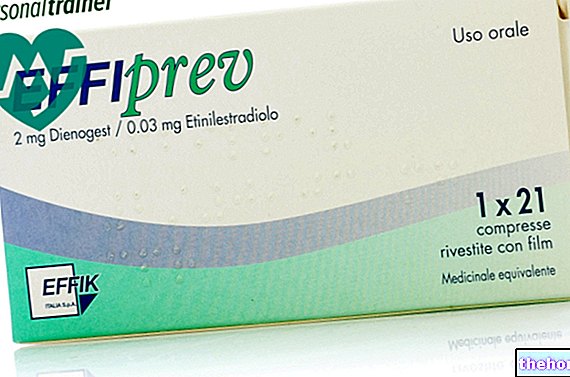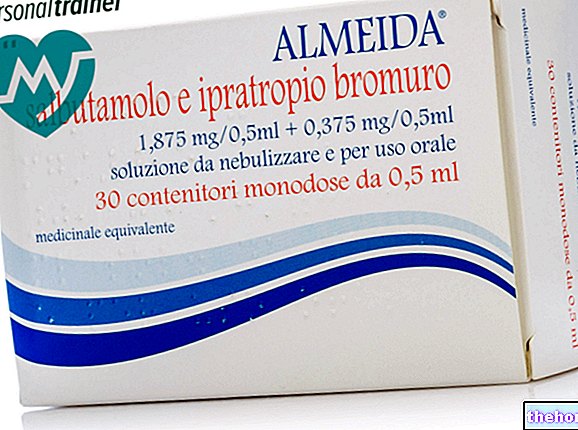Active ingredients: Ketoprofen
KEPLAT® 20 mg medicated plaster
Why is Keplat used? What is it for?
KEPLAT® is a 70 cm2 medicated plaster, flesh-colored, with a flexible support matrix. The adhesive side is covered with a plastic film. KEPLAT® is a non-steroidal anti-inflammatory drug for topical use. This medicine contains the active substance ketoprofen. KEPLAT® is used for the treatment of pain and inflammation resulting from trauma, sprains and bruises, such as muscle pain, stiffness, joint pain, back pain.
Contraindications When Keplat should not be used
Do not use KEPLAT®:
- If you are allergic to ketoprofen, or to any of the other ingredients of this medicine (listed in section 6) - If you have a history of skin allergy (hypersensitivity) to tiaprofenic acid, fenofibrate, UV sunscreens, perfumes.
- If aspirin or other NSAIDs cause you asthma attacks, breathing difficulties, acute rhinitis or nasal polyps (masses in the nasal passages), hives (rash), swelling of the eyelids or lips
- If you have had photosensitivity reactions
- If you have or have had a "gastrointestinal ulcer or bleeding or a" previous gastrointestinal (stomach) ulcer
- If you suffer from asthma
- If you have severe heart failure
- If you have liver or kidney dysfunction
- If you have a predisposition to bruising (bruising) or bleeding or have clotting / bleeding disorders or are on anticoagulant therapy
- If you are in the last 3 months of pregnancy (see section 2.4)
- In children under the age of 12.
The patch should not be used on open wounds or on the skin in the presence of pathological changes such as eczema, acne, dermatitis, inflammation or infection of any kind or on mucous membranes of orifices of the body.
Immediately stop using KEPLAT® if skin reactions occur including those that develop following the concomitant use of products containing octocrylene (octocrylene is an excipient present in various cosmetic and personal hygiene products such as shampoo, aftershave, shower gel and bath, skin creams, lipsticks, anti-aging creams, make-up removers, hair sprays, used to prevent their photodegradation).
Do not expose the treated areas to sunlight or UV lamps from the solarium for the duration of the treatment and in the two weeks following its interruption.
Precautions for use What you need to know before taking Keplat
Talk to your doctor or pharmacist before using KEPLAT®:
- If you suffer from allergic manifestations or have a previous allergy, especially following the administration of other analgesics, fever-lowering medicines and other NSAIDs
- If you have Crohn's disease or ulcerative colitis, chronic dyspepsia, previous bronchial asthma
- If you have liver, kidney or heart disease
- If you suffer from fluid retention
- Use caution if you are elderly as you are generally more prone to side effects.
Exposure to sunlight (even when the sky is cloudy) or to UVA lamps of the areas treated with KEPLAT® can induce potentially serious skin reactions (photosensitization). Therefore it is necessary:
- protect the treated parts from the sun with clothing for the entire duration of the treatment and in the two weeks following its interruption in order to avoid any risk of photosensitization
- wash your hands thoroughly after each application of KEPLAT®.
Treatment should be stopped immediately if any skin reaction occurs following the application of KEPLAT®
Prolonged or repeated use of the product can cause sensitization phenomena (hypersensitivity).
Pediatric population
Gastric bleeding, occasionally severe, and gastric ulcers have been reported in some pediatric patients treated with ketoprofen; therefore the medicine must be administered under strict supervision of the doctor who will have to evaluate the necessary dosage schedule from time to time.
The safety and efficacy of cutaneous formulations of ketoprofen in children have not been established.
Interactions Which drugs or foods can change the effect of Keplat
Tell your doctor or pharmacist if you are taking or have recently taken or might take any other medicines.
It is important to tell your doctor if you are taking methotrexate, blood thinners, certain blood pressure or heart medicines, antidiabetics or lithium.
Warnings It is important to know that:
Pregnancy and breastfeeding
KEPLAT® should not be used during pregnancy or breastfeeding.
If you are pregnant or breastfeeding, think you may be pregnant or are planning to become pregnant, talk to your doctor or pharmacist before using this medicine.
Since the safety of ketoprofen in pregnant women has not been evaluated, the use of ketoprofen during the first and second trimester of pregnancy should be avoided. KEPLAT® should not be used during the third trimester of pregnancy and is not recommended during pregnancy. "feeding time.
Driving and using machines
KEPLAT® can influence the ability to drive vehicles or to use machinery due to the possible onset of divertigo or drowsiness.
Dosage and method of use How to use Keplat: Dosage
Always use this medicine exactly as your doctor has told you. If you are unsure, consult your doctor or pharmacist.
The recommended dose is:
Adults:
Apply only one patch per day, unless otherwise prescribed by your doctor.
Children / Teenagers:
Between 12 and 18 years, according to doctor's prescription. Do not use in children under 12 years of age.
The patch should be applied to the painful area and replaced daily.
Before applying the patch, cleanse and dry the affected area. Remove the protective film and apply the adhesive part directly to the skin.
If the patch is to be applied to highly mobile joints such as the elbow or knee, a bent joint bandage may be applied to keep the patch in place.
Application instructions
- Fold the patch in half along the perforated division of the plastic liner
- Place the patch on the part of the body that hurts the most, clean and dry
- Remove half of the plastic liner from the perforated edge and smooth the adhesive surface over the area to be treated
- Remove the other half of the plastic backing in the same way and smooth out the entire patch over the area to be treated
DO NOT chew or swallow the patch.
Duration of treatment
According to the doctor's prescription, in any case not exceeding 14 days.
If you forget to use KEPLAT®
Just apply KEPLAT® as soon as you remember and then continue with the normal dose.
DO NOT take a double dose to make up for forgotten doses.
Overdose What to do if you have taken too much Keplat
If you have used KEPLAT® more than you should, tell your doctor or pharmacist immediately.
No cases of overdose have been reported.
Side Effects What are the side effects of Keplat
Like all medicines, KEPLAT® can cause side effects, although they do not occur in all people.
Stop using KEPLAT® and seek urgent medical treatment immediately in case of:
- Skin rash, hives, blisters, redness, burning or itching.
- Swelling of the face, runny nose, chest tightness, wheezing (severe allergic reactions).
Minor localized skin reactions have been reported in the areas of application of KEPLAT®:
Uncommon (may affect up to 1 in 100 people): redness, burning sensation, itching, allergic skin reactions, skin reactions when exposed to sunlight.
The following side effects have also been reported:
Dermatological reactions
Rare (may affect up to 1 in 1,000 people): photosensitization and hives. Cases of more severe reactions such as bullous or phylittenular eczema, which may extend beyond the application area or become generalized, have rarely occurred.
Renal and urinary disorders
Very rare (may affect up to 1 in 10,000 people): cases of worsening of previous renal failure.
Reporting of side effects
If you get any side effects, talk to your doctor or pharmacist. This includes any possible side effects not listed in this leaflet. You can also report side effects directly via the national reporting system of the Italian Medicines Agency at www.agenziafarmaco.it/it/responsabili. By reporting side effects you can help provide more information on the safety of this. medicinal.
Expiry and Retention
Keep KEPLAT® out of the sight and reach of children.
Store KEPLAT® in the original packaging in order to protect it from light.
The validity of the product after opening is 3 months (write the date of first opening in the space provided).
Whenever you remove a patch from the pack, carefully close the open side of the sachet to protect the remaining patches from light.
Do not use KEPLAT® after the expiry date stated on the carton or more than 3 months after first opening.
The expiry date refers to the product in intact packaging, correctly stored.
Do not throw any medicines via wastewater or household waste. Ask your pharmacist how to throw away medicines you no longer use. This will help protect the environment.
Other information
KEPLAT® content
The active ingredient is ketoprofen.
Each patch contains 20 mg of ketoprofen.
The other ingredients are: styrene-isoprene-styrene copolymer, poly-isobutylene 1200000, poly-isobutylene, hydrogenated rosin glycerol ester, zinc stearate, liquid paraffin, polyester base layer, plastic film.
Description of the appearance of KEPLAT® and contents of the package
KEPLAT® is a 70 cm2 flesh-colored medicated plaster with a flexible support matrix.
The adhesive side is covered with a plastic film.
One pack contains one sachet with 7 patches or 2 patches.
Not all pack sizes may be marketed.
Source Package Leaflet: AIFA (Italian Medicines Agency). Content published in January 2016. The information present may not be up-to-date.
To have access to the most up-to-date version, it is advisable to access the AIFA (Italian Medicines Agency) website. Disclaimer and useful information.
01.0 NAME OF THE MEDICINAL PRODUCT
KEPLAT 20 MG MEDICATED PATCH
02.0 QUALITATIVE AND QUANTITATIVE COMPOSITION
Each patch contains: 20 mg ketoprofen.
For the full list of excipients, see section 6.1
03.0 PHARMACEUTICAL FORM
Medicated plaster.
70 cm2 flesh-colored medicated plaster, with flexible support matrix. The adhesive side is protected by a plastic film.
04.0 CLINICAL INFORMATION
04.1 Therapeutic indications
Symptomatic treatment of pain and inflammation associated with acute musculoskeletal conditions such as trauma, sprains and bruises, as well as muscle pain, tenderness, joint pain, lower back pain.
04.2 Posology and method of administration
Dosage
Adults : unless otherwise prescribed by your doctor, apply only one patch per day.
Pediatric population : children aged between 12 and 18 years: according to medical prescription.
Do not use in children under the age of 12.
Duration of treatment expressed in days: according to medical prescription.
Do not exceed 14 days of treatment.
The patch should be replaced daily in the affected area.
Method of administration
Before applying the patch, cleanse and dry the affected area. Remove the protective film and apply the adhesive part directly on the skin. If the patch is to be applied to highly mobile joints such as the elbow or knee, it may be helpful to apply a bent joint bandage to keep the patch in place.
04.3 Contraindications
• Hypersensitivity to the active substance or to any of the excipients listed in section 6.1
• Known hypersensitivity reactions, such as. symptoms of asthma, allergic rhinitis, to ketoprofen, fenofibrate, tiaprofenic acid, acetylsalicylic acid or other NSAIDs
• Previous photosensitization reactions
• History of skin allergy to ketoprofen, tiaprofenic acid, fenofibrate, UV sunscreens or perfumes
• Exposure to sunlight, even when the sky is cloudy, including UV light from the solarium, during treatment and in the two weeks following its discontinuation
• Patients in whom substances with a similar mechanism of action (for example acetylsalicylic acid or other NSAIDs) cause asthma attacks, bronchospasm, acute rhinitis, or cause nasal polyps, urticaria or angioedema
• Active or suspected gastrointestinal ulcer or history of gastrointestinal ulcer
• Gastrointestinal bleeding or other active bleeding or bleeding disorders
• Severe heart failure
• Severe liver or kidney dysfunction
• Bleeding diathesis and other bleeding disorders, or patients undergoing anticoagulation therapy
• Third trimester of pregnancy (see section 4.6)
• Children under the age of 12
The patch should not be used on open wounds or on the skin in the presence of pathological changes such as eczema, acne, dermatitis, inflammation or infection of any kind or on mucous membranes of the body's orifices.
04.4 Special warnings and appropriate precautions for use
The systemic bioavailability of ketoprofen applied transcutaneously is significantly lower than with oral administration. However, the occurrence of systemic side effects cannot be completely excluded, although such effects are much less likely to occur, given the level of plasma binding.
Analgesics, antipyretics and non-steroidal anti-inflammatory drugs (NSAIDs) can cause potentially serious hypersensitivity reactions, including anaphylactic reactions, even in people not previously exposed to this type of medicine. The risk of hypersensitivity reactions following the use of ketoprofen is greater in subjects who have already had this type of reaction following the use of other analgesics, antipyretics and non-steroidal anti-inflammatory drugs (NSAIDs) (see section 4.3 Contraindications).
Administer with caution in patients with allergic manifestations or a history of allergy.
Patients with asthma in combination with chronic rhinitis, chronic sinusitis, and / or nasal polyposis have a higher risk of allergy to aspirin and / or NSAIDs than the rest of the population.
Treatment should be discontinued immediately as soon as skin reactions occur, including those that develop following concomitant use of products containing octocrylene.
Some cases of photosensitization have been reported which occurred a few days and, in rare cases, a few months after using the medicine. If symptoms of dermatitis occur, stop treatment and keep the affected area protected from sunlight.
The recommended duration of treatment should not be exceeded as the risk of developing contact dermatitis and photosensitization reactions increases over time.
In order to avoid the risk of photosensitization, it is recommended to protect the treated areas with clothing during the entire period of use of the product and in the two weeks following its interruption.
Pay particular attention in patients with Crohn's disease, ulcerative colitis, chronic dyspepsia, previous bronchial asthma.
Patients with current or previous gastrointestinal disease should be carefully monitored for the appearance of digestive disturbances, especially gastrointestinal bleeding. In the rare cases where gastrointestinal bleeding or ulceration occurs in patients receiving ketoprofen, treatment should be immediate suspended.
As with all NSAIDs, the drug can increase plasma urea nitrogen and creatinine.
As with other prostaglandin synthesis inhibitors, the drug may be associated with adverse events affecting the renal system which can lead to glomerulonephritis, renal papillary necrosis, nephrotic syndrome and acute renal failure.
As with other NSAIDs, the drug may cause transient small increases in some liver parameters and also significant increases in SGOT and SGPT (see section 4.8). In the event of a significant increase in these parameters, therapy must be discontinued.
Ketoprofen should be used with caution in patients with haematopoietic system disorders, systemic lupus erythematosus or mixed connective tissue disease.
As with other NSAIDs, ketoprofen can mask the symptoms of infectious diseases.
Caution should be exercised in the case of impaired hepatic, renal (see section 4.8) or cardiac function as well as in the presence of other conditions predisposing to fluid retention. In these cases, the use of NSAIDs can cause deterioration of renal function and fluid retention. Caution is also required in patients undergoing diuretic therapy or in whom hypovolaemia is suspected because the risk of nephrotoxicity is increased.
Caution should be exercised in the treatment of elderly patients who are generally more predisposed to adverse events (see section 4.8). The consequences of gastrointestinal bleeding and / or intestinal perforation, for example, are dose-dependent and are often more severe in the elderly; in addition, they can occur without warning symptoms or previous episodes at any time during treatment. Elderly patients are more likely to have impaired renal, cardiovascular or hepatic function.
The use of ketoprofen, as well as any drug that inhibits prostaglandin synthesis and cyclooxygenase, is not recommended in women intending to become pregnant.
The use of KEPLAT should be discontinued in women who have fertility problems or who are undergoing fertility investigations.
Prolonged or repeated use of the product may cause sensitization. Treatment must be discontinued if hypersensitivity reactions occur.
Do not use occlusive dressings.
Wash your hands thoroughly after each application of the product.
Pediatric population
Gastrointestinal bleeding, occasionally severe, and peptic ulcer have been reported in some pediatric patients treated with ketoprofen (see section 4.8); therefore the product must be administered under strict supervision of the physician who will have to evaluate the necessary dosage schedule each time.
The safety and efficacy of cutaneous formulations of ketoprofen in children have not been established.
04.5 Interactions with other medicinal products and other forms of interaction
The low systemic bioavailability of the ketoprofen released by KEPLAT means that interactions with other medicinal products are unlikely.
However, the following interactions concern NSAIDs in general:
Associations not recommended:
• Other NSAIDs, including high doses of salicylates (≥ 3 g / day): the concomitant administration of several NSAIDs may increase the risk of gastrointestinal ulcers and bleeding, due to a synergistic effect.
• Oral anticoagulants, parenteral heparin and ticlopidine: increased risk of bleeding due to inhibition of platelet function and damage to the gastrointestinal mucosa.
• Lithium (described with several NSAIDs): NSAIDs increase plasma levels of lithium (decreased renal excretion of lithium), which can reach toxic values. This parameter therefore needs to be monitored at initiation, in case of dose adjustment and after discontinuation of ketoprofen treatment.
• Methotrexate, used at high doses of 15 mg / week or more: increased blood toxicity of methotrexate due to a decrease in its renal clearance due to anti-inflammatory agents in general.
• Hydantoins and sulfonamides: the toxic effects of these substances can be increased.
Associations requiring precaution:
• Diuretics, angiotensin converting enzyme inhibitors: treatment with NSAIDs is associated with the risk of acute renal failure in dehydrated patients (decreased glomerular filtration due to decreased renal prostaglandin synthesis). Treatment with an NSAID may decrease their antihypertensive effect. If ketoprofen is prescribed together with a diuretic, it is essential to ensure that the patient is adequately hydrated and to monitor renal function at the start of treatment.
• Methotrexate, used in low doses, less than 15 mg / week: increased blood toxicity of methotrexate due to a decrease in its renal clearance due to anti-inflammatory agents in general. Monitor weekly blood counts during the first few weeks of the combination. Increase surveillance in the presence of even slight deterioration of renal function, and in the elderly.
• Pentoxifylline: increased risk of bleeding. Increase clinical monitoring and check bleeding time more frequently.
• Zidovudine: risk of increased toxicity on the red blood cell line by action on reticulocytes, with severe anemia occurring one week after starting treatment with the NSAID. Check the complete blood count and reticulocyte count one or more. two weeks after starting treatment with the NSAID.
• Sulfonylureas: NSAIDs can increase the hypoglycemic effect of sulfonylureas by displacing them from the binding sites with plasma proteins.
Associations that need to be considered:
• Beta-blockers: treatment with an NSAID can decrease their antihypertensive effect by inhibiting the synthesis of prostaglandins.
• Ciclosporin and tacrolimus: nephrotoxicity can be increased by NSAIDs due to effects mediated by renal prostaglandins. During associated therapy, renal function should be measured.
• Thrombolytics: increased risk of bleeding.
• Probenecid: plasma concentrations of ketoprofen may be increased; this interaction may be due to an inhibitory mechanism at the site of renal tubular secretion and glucuronide conjugation and requires adjustment of the ketoprofen dose.
04.6 Pregnancy and breastfeeding
Inhibition of prostaglandin synthesis may adversely affect pregnancy and / or embryo / fetal development. Data from epidemiological studies suggest an increased risk of spontaneous abortion and cardiac malformation and gastroschisis following the use of an inhibitor of synthesis of prostaglandins in the early stages of pregnancy. The absolute risk of cardiovascular malformation increased from less than 1% to approximately 1.5%. The risk is believed to increase with dose and duration of therapy. In animals, administration of a prostaglandin synthesis inhibitor has shown an increase in pre- and post-implantation loss and embryo-fetal mortality. In addition, an increased incidence of various malformations, including cardiovascular ones, has been reported in animals given a prostaglandin synthesis inhibitor during the organogenetic period.
Pregnancy
First and second trimester of pregnancy.
Since the safety of ketoprofen in pregnant women has not been evaluated, the use of ketoprofen during the first and second trimester of pregnancy should be avoided.
Third trimester of pregnancy:
During the third trimester of pregnancy, all prostaglandin synthesis inhibitors, including ketoprofen, can induce cardiopulmonary toxicity (with premature arterial duct closure and pulmonary hypertension) and renal dysfunction, which can progress to renal failure with oligohydroamnios in the fetus.At the end of pregnancy, prostaglandin synthesis inhibitors, including ketoprofen can lead to a possible prolongation of bleeding time (in both mother and baby), an anti-aggregating effect that can occur even at very low doses and the inhibition of uterine contractions causing delay or prolongation of labor.
Therefore, ketoprofen is contraindicated during the third trimester of pregnancy.
If ketoprofen is used by women who are trying to conceive or during the first and second trimester of pregnancy, the dose should be kept as low as possible and the duration of treatment should be as short as possible.
Feeding time
It is not known whether ketoprofen is excreted in human milk. Ketoprofen is not recommended while breastfeeding.
04.7 Effects on ability to drive and use machines
The drug has a small or moderate influence on the ability to drive or use machines, due to the possible onset of dizziness or somnolence (see section 4.8).
04.8 Undesirable effects
Prolonged use of products for topical administration can cause hypersensitivity phenomena. In such cases, treatment must be suspended and a suitable alternative therapy must be initiated.
Undesirable effects reported with ketoprofen in systemic formulations
Although they have never been associated with topically applied ketoprofen, adverse events reported with systemically administered ketoprofen are listed below: the most frequent adverse events are minor and transient and consist of gastrointestinal effects, such as indigestion, dyspepsia, nausea , constipation, diarrhea, heartburn and various forms of abdominal disorders.
Serious adverse reactions, all very rare, mainly include cases of skin reactions (urticaria, erythema, rash, angioedema), gastrointestinal and respiratory tract reactions (bronchospasm, dyspnoea, laryngeal edema), as well as episodic cases of allergic / anaphylactoid, anaphylactic shock and edema of the mouth.
Most of the reactions in allergic / asthmatic patients and / or with known hypersensitivity to NSAIDs were of a serious nature.
Undesirable effects reported with topical ketoprofen
The following MedDRA frequency and system organ classification convention is used: Very common (≥1 / 10), Common (≥1 / 100,
Disorders of the immune system
• Not known: anaphylactic shock, angioedema, hypersensitivity reactions.
Skin and subcutaneous tissue disorders
• Uncommon: Localized skin reactions such as erythema, eczema, itching and burning sensation
• Rare: photosensitization and urticaria. Cases of more serious adverse reactions, such as bullous or phylittenular eczema, which may extend beyond the area of application or become generalized.
Renal and urinary disorders
• Very rare: cases of worsening of previous renal failure.
Reporting of suspected adverse reactions
Reporting of suspected adverse reactions occurring after authorization of the medicinal product is important as it allows continuous monitoring of the benefit / risk balance of the medicinal product. Healthcare professionals are asked to report any suspected adverse reactions via the national reporting system. "Italian Medicines Agency, through the website http://www.agenziafarmaco.gov.it/it/responsabili.
04.9 Overdose
There are no known cases of overdose.
In the event of an overdose with evident clinical manifestations, symptomatic therapy should be initiated immediately and common emergency measures applied.
05.0 PHARMACOLOGICAL PROPERTIES
05.1 Pharmacodynamic properties
Pharmacotherapeutic group: non-steroidal anti-inflammatory drugs for topical use.
ATC code: M02AA10.
Mechanism of action
Ketoprofen is an inhibitor of cyclooxygenase and lipoxygenase pathways. Furthermore, ketoprofen is a potent inhibitor of bradykinin (chemical mediator of pain and inflammation)
Pharmacodynamic effects
Inhibition of prostaglandin synthesis results in a potent anti-inflammatory, analgesic and antipyretic effect. Lipoxygenase inhibitors appear to attenuate cell-mediated inflammation and therefore slow the progress of tissue degeneration in inflamed joints. Furthermore, ketoprofen stabilizes lysosomal membranes against osmotic damage and prevents the release of lysosomal enzymes that regulate tissue degeneration in inflammatory reactions.
05.2 Pharmacokinetic properties
Absorption
Ketoprofen can be applied topically in effective concentrations, albeit with very low plasma concentrations of the drug. Therapeutic levels in affected tissues provide relief from pain and inflammation.
Distribution
Ketoprofen is 95-99% bound to plasma proteins. Significant levels of ketoprofen were found in tonsillar tissue and synovial fluid after systemic administration.
Biotransformation
Ketoprofen is extensively metabolised: approximately 60-80% of the systemically administered product is found in the form of metabolites in the urine.
Elimination
Elimination is rapid and essentially via the kidney: 50% of the product administered systemically is excreted in the urine in 6 hours.
05.3 Preclinical safety data
There are no further relevant preclinical data beyond those already reported.
06.0 PHARMACEUTICAL INFORMATION
06.1 Excipients
Styrene-isoprene-styrene copolymer
Poly-isobutylene 1200000
Poly-isobutylene
Hydrogenated rosin glycerol ester
Zinc stearate
Liquid paraffin
Support matrix in polyester
Plastic film
06.2 Incompatibility
Not applicable.
06.3 Period of validity
3 years.
After the first opening of the sachet: 3 months, if closed carefully after opening - see point 6.4.
06.4 Special precautions for storage
Keep the medicine in the original package in order to protect it from light.
Whenever you remove a patch from the pack, carefully close the open side of the sachet to protect the remaining patches from light.
06.5 Nature of the immediate packaging and contents of the package
Sachet in cellophane, polyethylene, aluminum and polyethylene laminated film.
Each pack contains one sachet with 7 patches or 2 patches.
Not all types of packaging may be marketed.
06.6 Instructions for use and handling
Any unused product or waste material must be disposed of in accordance with local regulations in force.
07.0 MARKETING AUTHORIZATION HOLDER
Hisamitsu UK Limited
5 Chancery Lane,
London
WC2A 1LG United Kingdom
Dealership for sale: SIGMA-TAU Industrie Farmaceutiche Riunite S.p.A.
Viale Shakespeare, 47 - 00144 Rome
08.0 MARKETING AUTHORIZATION NUMBER
Keplat 20 mg medicated plaster, 7 patches: AIC n. 035641012
Keplat 20 mg medicated plaster, 2 patches: AIC n. 035641024
09.0 DATE OF FIRST AUTHORIZATION OR RENEWAL OF THE AUTHORIZATION
22-11-2004
Renewal: 12-01-2010
10.0 DATE OF REVISION OF THE TEXT
11-06-2016























-nelle-carni-di-maiale.jpg)




